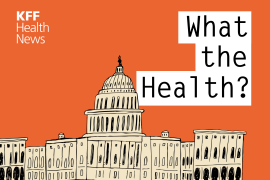Studies Show Increasing Strain on Emergency Departments
Hospital emergency department patient admissions increased by 7% between 1993 and 2003, and several recent studies suggest the ability of many EDs to treat the sickest patients is "getting stretched thin," Scripps Howard/Wichita Eagle reports. A report published this week in the Annals of Emergency Medicine found that ED visits for people ages 65 and older are increasing the most -- by 26% between 1993 and 2003.
Mary Pat McKay, an emergency-medicine researcher at George Washington University Medical Center, said, "These patients tend to be sicker and are more likely to be admitted from the emergency department to the hospital, but with many hospitals running a deficit of inpatient beds, I don't see where these patients are going to go," adding, "Given the needs of this population and the nature of their medical problems, the current state of overcrowding is likely to continue to escalate dramatically."
Some hospitals and private companies have established urgent-care and minor-care clinics to handle routine care quickly without an appointment. However, such clinics could further strain EDs by drawing away patients who have health insurance or the ability to pay out of pocket for care.
Another study, released last month by the Center for Studying Health System Change, found that difficulty in getting payments from uninsured patients contributes to a growing reluctance among specialists to work in EDs. The study led by Ann O'Malley, a senior researcher at the center, was based on visits to 12 health facilities in representative metropolitan areas across the U.S. The researchers found that payment issues and a greater risk of malpractice lawsuits have led many specialists to open their own practices.
Hospitals have tried using incentives to encourage specialists to work in EDs, but such methods increase costs for patients and insurers (Bowman, Scripps Howard/Wichita Eagle, 12/9).
An abstract of the AEM report is available online.






